Shop
Showing 1–16 of 54 results
-
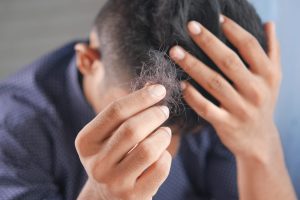
Test (Copy)
£29.00 Read moreAlopecia Causes and Treatment: Alopecia areata is a condition where the immune system attacks its own hair follicles, which causes hair loss usually to the scalp and face. The hair follicles are present in the skin. It can affect people of any age and typically manifests as circular bald patches on the scalp or other parts of the body. In some cases, it can progress to total hair loss on the scalp (alopecia totalis) or complete loss of body hair (alopecia universalis).
If unsure of diagnosis, please speak to our clinicians who can provide potent topical corticosteroid treatment, if there is no evidence of hair regrowth. Please provide pictures of non-intimate areas if you choose the telephone consultation; pictures are not required for video consultation.
-

Alopecia
£35.00 Read moreSuffering from Alopecia? Let us help you.
What is Alopecia?
Alopecia areata is a condition where the immune system attacks its own hair follicles, which causes hair loss usually to the scalp and face. The hair follicles are present in the skin. It can affect people of any age and typically manifests as circular bald patches on the scalp or other parts of the body. In some cases, it can progress to total hair loss on the scalp (alopecia totalis) or complete loss of body hair (alopecia universalis).
If unsure of diagnosis, please speak to our clinicians who can provide potent topical corticosteroid treatment, if there is no evidence of hair regrowth. Please provide pictures of non-intimate areas if you choose the telephone consultation; pictures are not required for video consultation.
-

Shoulder Pain
£35.00 Read moreSuffering from Shoulder Pain for more than 2 weeks? Let us help you
What is Shoulder pain?
Shoulder pain is a common condition that can result from various causes, including injuries, overuse, or underlying medical conditions. The shoulder is a complex joint that allows a wide range of motion, but this complexity also makes it vulnerable to problems. Understanding the cause of shoulder pain is essential for effective treatment and management.
Shoulder pain is very common and symptoms tend to improve after 2 weeks. If persisting for more than 2 weeks, please speak to our clinicians via a video consultation.
-
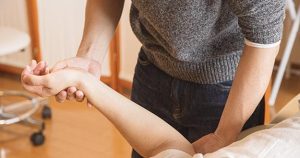
Tendonitis
£35.00 Read moreSuffering from Tendonitis? Let us help you.
What is Tendonitis?
Tendonitis is a painful condition in which the tendons that attach your muscles to your bones become irritated and inflamed. It may result from overuse, gradual wear and tear, or an unexpected injury. Any tendon in your body can develop tendonitis, but it commonly occurs in areas such as the shoulders (rotator cuff tendonitis), elbows (tennis elbow or golfer’s elbow), wrists (wrist tendonitis), knees (patellar tendonitis), and ankles (Achilles tendonitis). Treatment for tendonitis typically involves rest, ice therapy, anti-inflammatory medications, physical therapy, and in some cases, corticosteroid injections or surgery for severe or chronic cases.
-
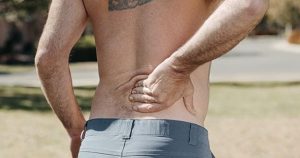
Musculoskeletal (MSK) Pain
£35.00 Read moreSuffering from Musculoskeletal pain? Let us help you.
What is Musculoskeletal pain?
Musculoskeletal pain refers to pain that affects the muscles, bones, ligaments, tendons, and nerves. It can occur in any part of the body and may range from mild to severe. This type of pain is often associated with conditions that affect the musculoskeletal system, such as injuries, diseases, or overuse. It can be caused by various factors and conditions.
These include:
- Back Pain
- Shoulder pain
- Knee pain
- Elbow pain
- Wrist pain
Our clinicians can offer advice, guidance and if needed, prescribe medication for pain relief. The video consultation is recommended. They can also advise if you require onward referral and can write to your GP for review.
-

Warts/Verrucas
£35.00 Read moreHave a Wart/Verruca? Let us help you.
What is a Wart/Verruca?
Warts are generally harmless, and they occur due to the human papillomavirus (HPV). They are not particularly attractive. Even though they frequently heal on their own without any help, sometimes treating them helps the healing process. Although you need close skin-to-skin contact to transfer the virus, it can also be spread by contact with an already contaminated surface.
Warts are little bumps on your skin that have a cauliflower type of appearance. Most of the time, they grow them on your hands or feet, and you may only have one or several may develop simultaneously. A verruca is what grows on your foot. There are numerous varieties of warts, and this will impact their appearance and accompanying symptoms.
-
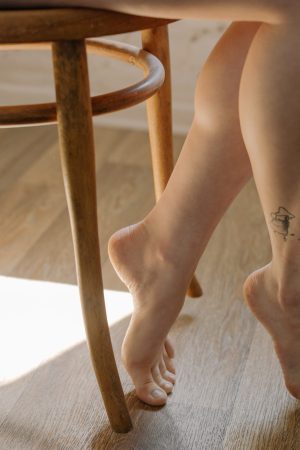
Plantar Fasciitis (Heel Pain)
£35.00 Read moreSuffering from heel pain? Let us help you.
What is Plantar fasciitis?
Plantar fasciitis (heel pain) is a common condition that causes pain in the heel and bottom of the foot. It occurs when the plantar fascia, a thick band of tissue that runs across the bottom of the foot and connects the heel bone to the toes, becomes inflamed or irritated. This condition is particularly common among runners, people who are overweight, and those who wear shoes with inadequate support.
-
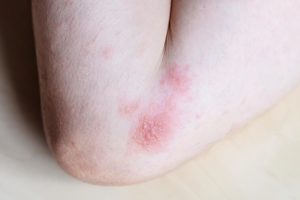
Shingles
£35.00 Read moreWorried you have Shingles? Let us help you.
What is Shingles?
Shingles, also known as herpes zoster, is a viral infection brought on by the chickenpox virus that affects a nerve and the skin around it. As a result, the affected area develops blistered itchy, painful rash. Only people who have previously experienced chickenpox can get shingles.
The virus stays in the nerves after the initial infection and causes shingles when it reawakens in one specific nerve. After the initial chickenpox infection, this can occur years or even decades later. The virus frequently re-emerges in these ways in patients with compromised immune systems, however it is unclear why. The duration of each case of shingles might range from a few weeks to a month.
Although there is no known cure for shingles, there are several therapies that can help make the discomfort it causes more bearable. You should speak to our clinician or your GP right away if you suspect that you have shingles.
-

Scabies
£35.00 Read moreWorried you have Scabies? Let us help you.
What is Scabies?
Scabies is an itchy skin ailment caused by Sarcoptes scabiei, a small burrowing mite. Itching is severe in the region where the mite burrows. The need to itch may be particularly severe at night.
It is infectious and can spread swiftly in a household, child nursery, school class, nursing facility, or jail through close physical contact. Because scabies is extremely infectious, doctors frequently urge that whole families or contact groups be treated.
Scabies is easily treatable. Scabies mites and their eggs are killed by medications applied to the skin. However, you may have irritation for several weeks following therapy.
-

Urticaria (Hives)
£35.00 Read moreSuffering from Urticaria? Let us help you.
What is Urticaria?
Urticaria, (is also known as welts, hives, nettle rash or weal’s) is a raised, itchy, red rash caused by fluid leaking from blood vessels immediately beneath the skin’s surface. It may arise on a single section of the body or it may cover a greater area. The rash may change within 24 hours, but generally settles within a few days. Urticaria can be acute (lasting less than six weeks) or chronic (lasting six weeks or longer). It can be triggered by a variety of factors, including allergic reactions, infections, stress, or physical stimuli like heat or cold.
-
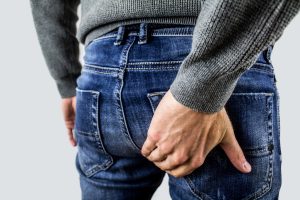
Haemorrhoids (Piles)
£35.00 Read moreWorried about Haemorrhoids? Consult with us today.
What are Haemorrhoids (Piles)?
-

Gout
£35.00 Read moreSuffering from Gout? Let us help you.
What is Gout?
Gout is an arthritic condition that produces excruciating pain, swelling, and inflammation in a single joint (although more than one may be affected). It occurs when there is an accumulation of uric acid in the body, leading to the formation of sharp, needle-like crystals in the joints. It usually affects your big toe, but it can also affect other joints in your foot, ankles, knees, wrists, and hands. The discomfort normally begins in the middle of the night while you’re sleeping and gradually worsens over a few hours. The symptoms occur due to a build-up of uric acid in the blood and this causes uric acid crystals to deposit in the joints.
-
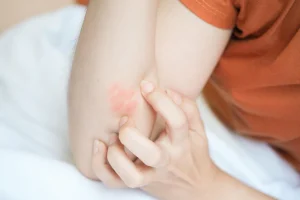
Fungal Skin Infection (Athlete’s foot, Ringworm and Intertrigo)
£35.00 Read moreSuspecting Fungal Infection? Let us help you.
What is a Fungal skin Infection?
Fungal skin infections are caused by fungi that invade and grow in the skin, nails, or hair. These infections are common and can affect different parts of the body, leading to various symptoms like itching, redness, and rashes. Fungal infections can be superficial, affecting the skin and mucous membranes, or more deep-seated, affecting other body tissues. Fungal infections include athlete’s foot, ringworm, and intertrigo rashes. Fortunately, these infections are frequently treatable, and our clinicians will be able to explain what you can do to prevent them from recurring. It is very common to develop fungal infections on the folds of the skin (e.g. under breasts) and public places are the main place you can become infected.
-
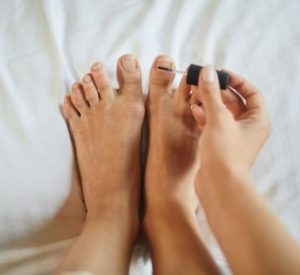
Fungal Nail Infection (Tinea Unguium or Onychomycosis)
£35.00 Read moreSuffering from fungal Nail Infection? Let us help you
What is a Fungal Nail Infection?
A fungal nail infection (Tinea Unguium or Onychomycosis) is caused by fungus invasion . If left untreated, it leads to unsightly, larger nails that can be painful. This fungus can live on your skin without harming you, but if given the right conditions (they favour warm, wet settings), it can proliferate and cause illness.
The majority of fungal nail infections are harmless, although they can be difficult to treat. The illness can affect either your toe or fingernails, and it usually begins slowly with few symptoms. The nail, however, may become discoloured or distorted as the fungus multiplies and spreads, causing pain while walking or wearing tight shoes.
-
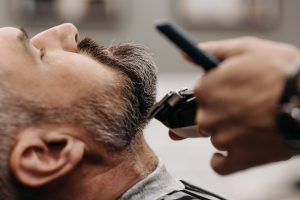
Folliculitis
£35.00 Read moreSuffering from Folliculitis? Let us help you
What is Folliculitis?
Folliculitis is a skin disorder where the hair follicles become infected, which results in tender, red spots called pustules on the skin’s surface. Folliculitis is the result of ingrowing hairs; the grown hair curls back on itself and the follicles becomes infected. Staphylococcus aureus is the most common organism that causes folliculitis (S. aureus). A fungus or other foreign bodies detected on the skin can sometimes cause it as well. While folliculitis is generally not serious, it can be uncomfortable and, if left untreated, can lead to more severe infections or complications like scarring.
-

Ear Aches and Infections
£35.00 Read moreSuffering from an Ear infection? Let us help you
What is an Ear infection?
Ear infections are very common. They develop when bacteria or viruses infect the body, causing swelling and, in certain cases, a fluid build-up. There are numerous forms of ear infections that affect different areas of the ear and have distinct consequences. Our clinicians can go over your symptoms with you and, if feasible, determine the sort of ear infection you have. If required, they can prescribe the appropriate medicine to treat. Outer ear infections (also known as otitis externa or “swimmer’s ear”) cause inflammation, swelling, and discomfort of the ear canal. Middle ear infections (also known as otitis media) causes build-up of fluid behind the eardrum and inflammation (swelling and redness).